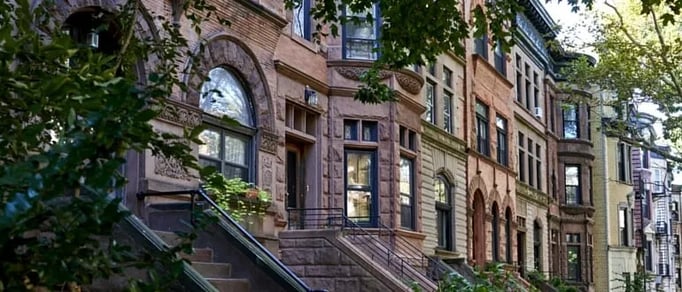3 min read
3 Tips: Make Older Multi-Family Building Eco-Friendly (On a Budget)
![]() David Schwartz
May 5, 2016 9:02:48 AM
David Schwartz
May 5, 2016 9:02:48 AM

Eco-friendly—it’s a buzzword that’s gone mainstream over the past decade. But what does it mean and is it really anything new?
Despite its emergence over the last couple of decades, environmentalism itself is as American as apple pie. Famous authors like Henry David Thoreau promoted attitudes of conservation and enjoyment of and respect for nature in early literature.
Of course, our forefathers could have hardly imagined the extent industrialism (and special interests) would take on our world’s natural resources in the years to come. But more and more Americans are seeing the connection between eco-friendly living, money saved, enhanced well-being and environmental preservation.
But what does this mean for building owners? Rental properties across the country are going to have to get on board or be left behind. Not only do eco-friendly building features act as a promotional tool by helping attract and retain tenants, but they also save landlords some serious cash.
In this article we’ll review three tips to make your older building more eco-friendly:
1. CONSERVE WATER USAGE
This is the BIG one! With average water costs rising significantly across the nation (NYC’s water bills have gone up nearly 80 percent since 2005), and the average American family consuming 400 gallons of water a day, savvy landlords are searching for effective conservation methods.
But water itself isn’t the only problem; water heating systems are the second biggest user of electricity in living spaces according to the U.S. Department of Energy and account for an average of 18 percent of electricity costs. Add to this the fact that 65 percent of tenants water usage is hot and your money is going down the drain. The solution?
- Install “The Water Scrooge” shower and faucet regulators
- Complete thorough inspection of pipe leaks, water drips, and broken fixtures
- Calibrate water flow of toilets to a specified number of gallons per flush
- Routinely complete leak inspections and calibration checks (adjusted as needed)
The “Water Scrooge” is our hidden, tamper-proof device that seamlessly regulates the flow of shower water. Not only can it reduce water and energy bills up to 40 percent, but it also comes with a bunch of perks: Spa-like shower heads, white-glove installation, and courtesy water leak and toilet inspections.
Obviously, we’re biased, but we can confidently say this is the number one water conservation solution on the market for multi-family buildings. Many of our clients wonder how we’re able to offer so much for free, and the answer is—we’ve built it into our business model. We founded our company with a genuine desire to spread conservation practices across the country, plain and simple.
2. Choose Energy Efficient Appliances
Dishwashers, washing machines, dryers—there’s no getting around the fact that they're expensive. While the primary criteria for any major appliance should be that it works well, aesthetics do matter when you’re renting to tenants.
Only you know whether you’re ready for an upgrade. But if you are, do your research on certified ENERGY STAR appliances that are designed to reduce consumption and cut down costs. Although, keep in mind that you’re likely to see much higher savings with practices like caulking and weatherstripping buildings, water conservation, and energy awareness campaigning.
3. Switch to LEDs or CFLS
In case you haven’t heard, incandescent bulbs are swiftly being phased out. And it’s not just here in the U.S; several countries in South America and the E.U have committed to reducing energy consumption by mandating the use of LEDS and CFLS over the next few years. Although these bulbs initially cost more, they’re designed to offset the cost by lasting longer.
According to energystar.gov, you can expect to save between $30 and $80 in electricity costs over the lifetime of each ENERGY STAR bulb. Consider a building that contains 500 light bulbs; that’s an estimated savings of $15,000 to $40,000! However, keep in mind, “overall mileage” may vary according to climate. During warmer months, efficient lighting has the additional energy-saving effect of reducing cooling needs.
Nonetheless, a net cost savings has been observed across the board. Which type of eco-friendly bulb should you go with? LEDs cost more, but last longer (approx. 50,000 hours compared to the 8,000 hour lifespan of CFLs). But CFLs are cheaper, while still offering energy savings. The major downside to CFLs is that they require special care if broken, due to mercury content.
As you can see, there are several ways to reduce costs and bring eco-friendly practices into your multi-family buildings. You can begin implementing the above practices one by one to start saving now. Just be sure to update your marketing materials to let prospective tenants know about your new eco-friendly amenities! We hope you’ve enjoyed this article.
If you would like to learn what it would take to get The Water Scrooge installed in your buildings, contact us for a quote.


